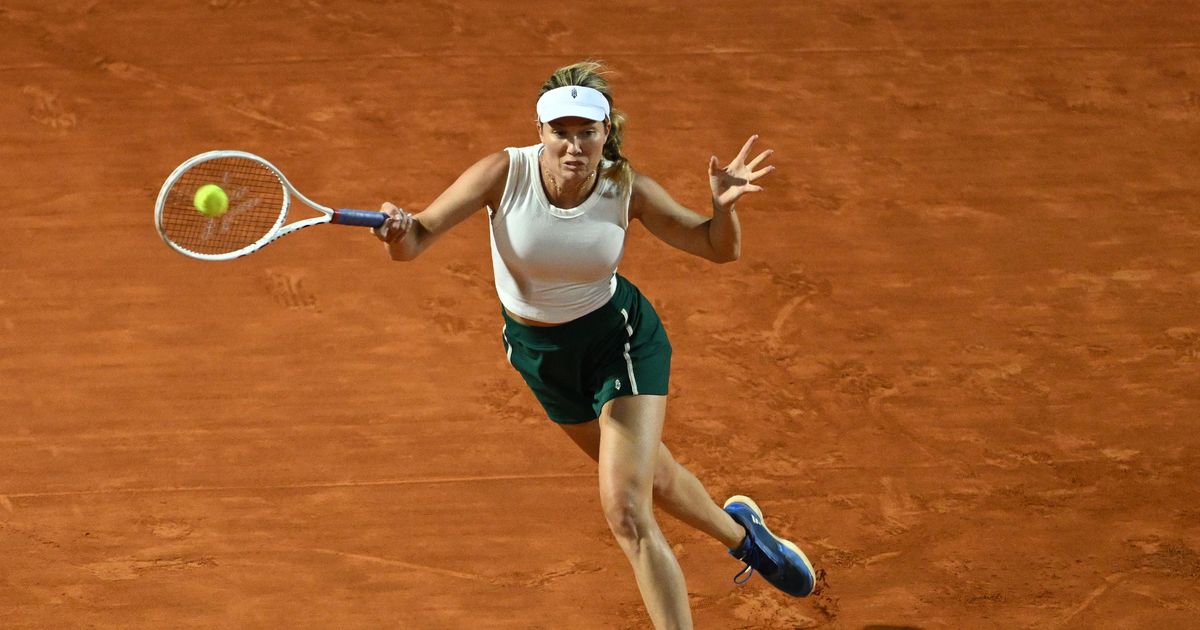
PARIS — Danielle Collins tore through the field, including Elena Rybakina in the final, and won a career-altering title on the baking-hot hard courts at the Miami Open. She was in her usual attack mode — swing hard and ask questions later.
And then Collins moved to the green clay in Charleston and the same exact thing happened. She raced into the final, telling Tennis Channel, “This is what I do. Gotta bring the fire.”
So she did, going for the line on almost every shot, defeating Daria Kasatkina 6-1, 6-2 in the final. Collins hit 37 winners (27 more than Kasatkina) and won 95 percent of her first-serve points.
It was almost like the surface never changed. Certainly, her attitude and approach didn’t.
Much is made of the transition from hard courts to clay. The players cite the numerous adjustments necessary to adapt — from sliding on a slippery surface, the slower pace of the rallies, to the dramatic atmospheric changes. Even the three European red clay tournaments — Madrid, Rome and Paris — have distinctly different sets of circumstances.
But if you are a big hitter, how much do you really have to change your game on clay? Maybe not as much as you might think. With all the recent success of the harder hitters, the so-called clay-court specialist seems to be a vanishing breed.
Back in the day, Martina Navratilova was considered a power player. She won 16 of her major titles on the quicker grass and hard courts — and only two on the red clay at Roland Garros.
“When you are a big hitter, you typically go for more than the opponent early in the point,” Navratilova said recently. “On clay, your big ball is not going to pay off as much — but neither, for that matter, is the opponent’s.
“You have to be a little more patient before pulling the trigger. Hit the rally ball instead and stay patient — go for it as much as you normally would, but just a little later. Eventually, you’ll get the easier, shorter ball because the clay will slow it down. It might be one or two more balls to hit in a rally, but not 10.”
In other words, keep swinging, keep going for it — just bide your time and the opening may present itself.
The most recent example came a week ago when World No.1 Iga Swiatek and No.2 Aryna Sabalenka met in the Rome final. Two of the most aggressive players on the Hologic WTA Tour, they played a magnificent final in Madrid, won in a third-set tiebreak by Swiatek. In Rome, however, Sabalenka quickly lost patience and tried to end points too quickly. Later she admitted that Swiatek’s quickness and ability to take the ball so early prompted her to rush things.
Brad Gilbert was a formidable player himself, then coached Andre Agassi and Andy Roddick. Today, he works with Coco Gauff, the 20-year-old American ranked No.3 in the world. Gilbert says that success on clay is sometimes nothing more than a state of mind. Agassi and Roddick, he said, were always happy to go back home to the United States. With a deep run in Paris, Gauff might stay in Europe through Wimbledon.
“Come over here, practice on it — embrace it,” Gilbert said. “I mean, that’s all it is. Embrace the court, embrace the culture and play to your strengths. If you try to do something completely different, you’re not going to play well on any surface.
“It’s about embracing what you can do — not what you can’t.”
Jelena Ostapenko, perhaps more than anyone, follows her heart. She hits flat, hard shots and, figuratively, lives and dies with the consequences. In the spring of 2017, it worked wonderfully. Ostapenko won the title at Roland Garros, stunning Simona Halep in three sets. She was the youngest woman (20) to win the French Open in two decades and the lowest-ranked player (No.47) since the system was introduced in 1975.
Seven years later, Ostapenko still blisters the ball regardless of the surface. She does not display anything approaching the kind of patience Navratilova preaches. In the third round in Rome, Ostapenko hit an astonishing 72 winners and an equally astonishing 69 unforced errors. She actually won the match over Sara Sorribes Tormo 6-4, 5-7, 6-1.
Sabalenka and Elena Rybakina, among the biggest hitters, love a fast court. Sabalenka won the Australian Open title the past two years, and Rybakina was the Wimbledon champion in 2022. And yet, they’ve found a way to thrive on clay. Rybakina leads all women with 229 aces, while Sabalenka is fourth, with 152. That asset still works on clay, just not as often.
It’s worth noting that the next four players behind Sabalenka in aces — Collins, Zheng Qinwen, Ostapenko and Gauff — all made the Rome quarterfinals, along with Sabalenka, Swiatek, Madison Keys and Victoria Azarenka. Interesting, that there wasn’t a clay-court specialist in the bunch.
Keep an eye on all of them during the coming fortnight in Paris because Roland Garros plays a lot like Rome, especially if this year’s favorable forecast holds.
You might be surprised to learn that Collins has a better record on clay (38-21, .644) than hard courts (111-69, .617). So do Zheng and Keys. This is Keys’ 16th year as a professional, and she’s stopped overthinking play on clay.
“The way that I kind of want points to go, big hitting, flat, fast, all of that, grass feels easy, always kind of just felt natural,” Keys said. “Fast hard courts, obviously growing up on those, are the most comfortable for me.
“But I think for so long on clay I was constantly trying to change my game to fit clay versus just playing tennis on clay, making some minor tweaks here or there. I think I’m a fairly good natural mover on clay, so I finally just stopped fighting it and really leaning into it and begrudgingly loving it.”
Source: https://www.wtatennis.com/news/4025952/how-to-survive-and-thrive-on-a-clay-court-stay-true-to-your-game


